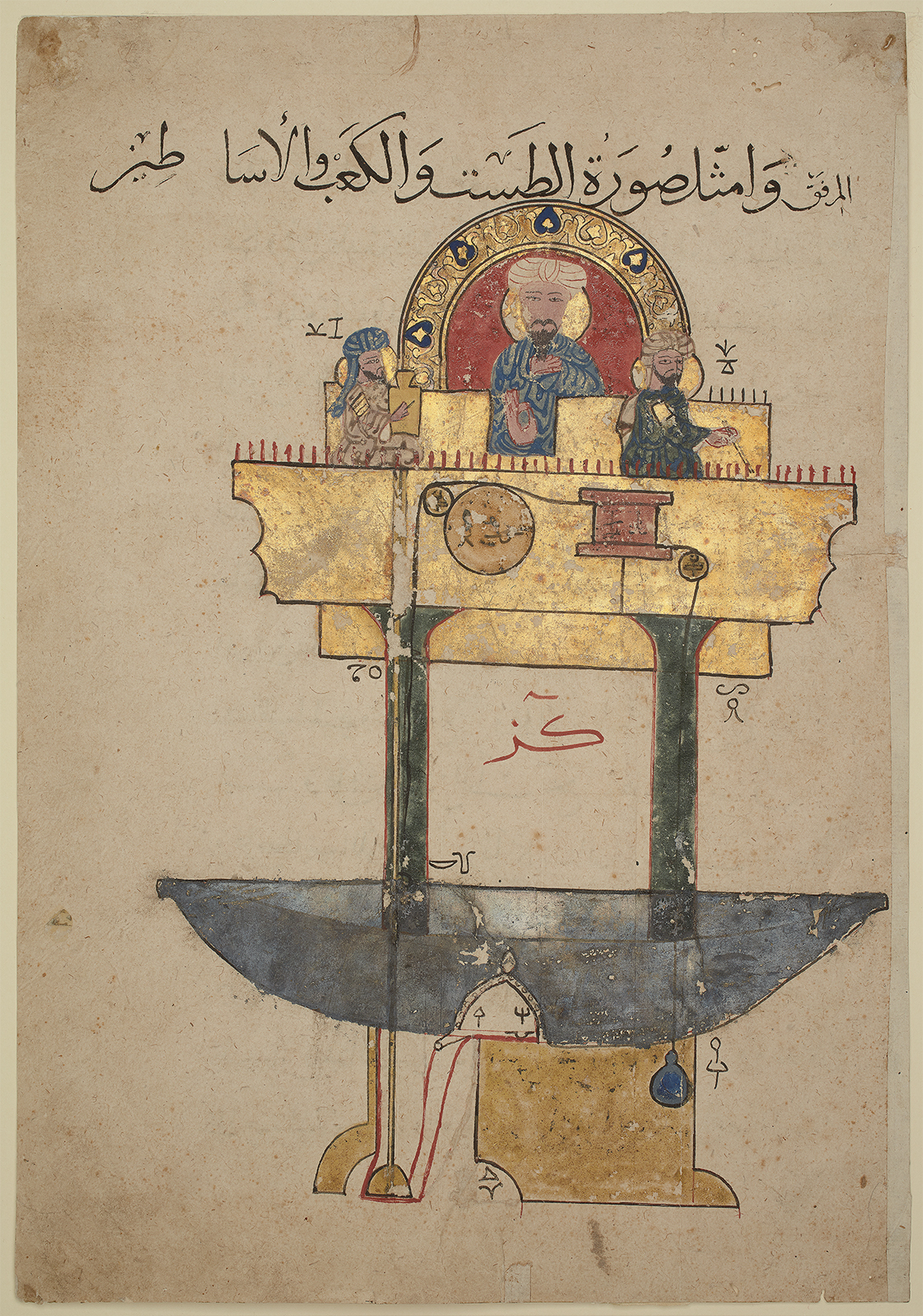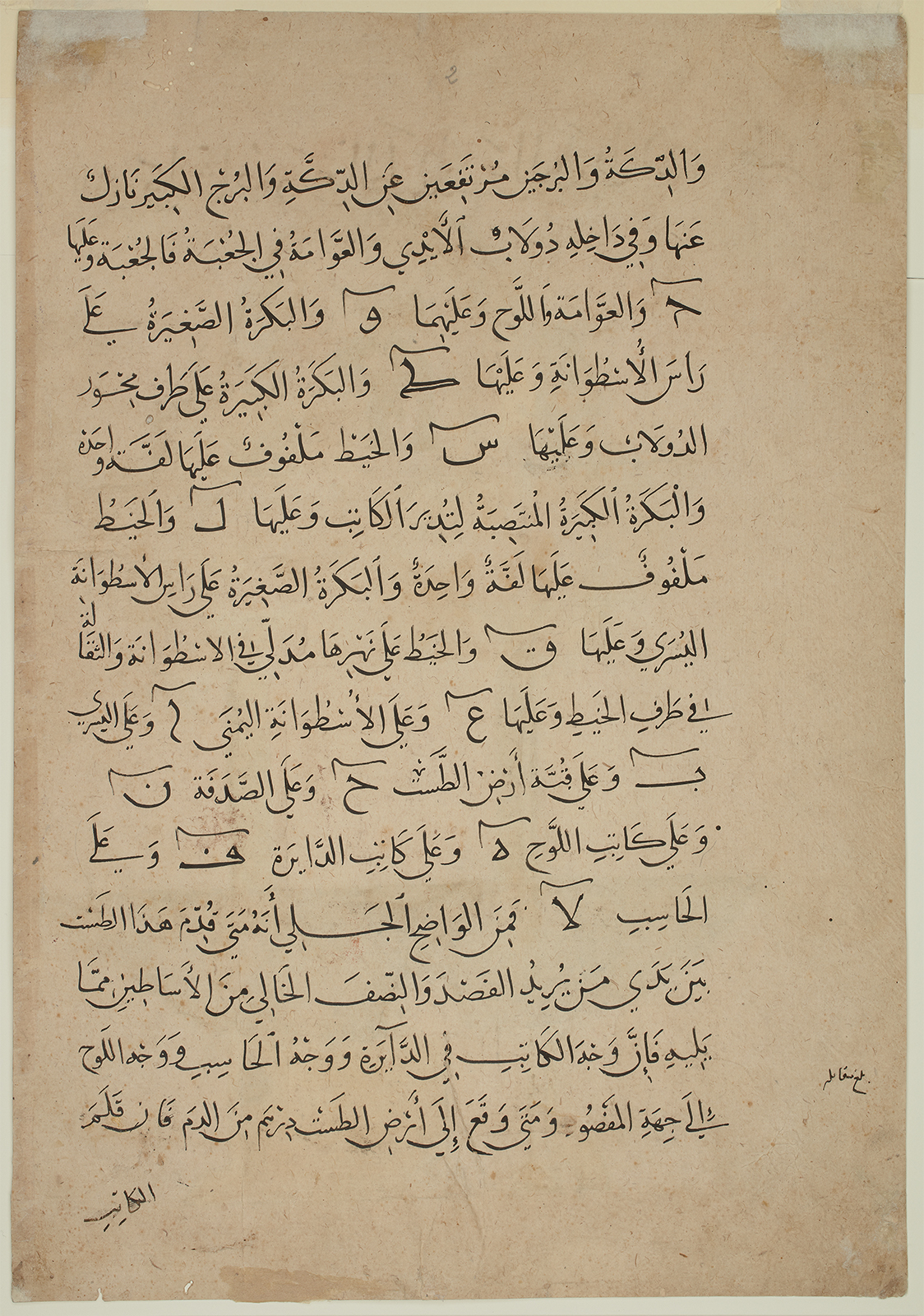Click on the image to zoom
A Blood-Measuring Device
Folio from a manuscript of The Book of Knowledge of Ingenious Mechanical Devices (Kitab al-hiyal al-nafisa)
- Accession Number:AKM11
- Creator:Author: Al-Jazari, 1136 - 1206
Created for: Tulak al-Hasani al-Malik al-Salihi, An Amir of Mamluk Sultan Hasan, Nasir al-Din Muhammad
Scribe: Muhammad ibn Ahmad al-Izmiri - Place:Egypt, Cairo
- Dimensions:27.3 x 39.1 cm
- Date:February-March 1354 CE/AH 755
- Materials and Technique:opaque watercolour, ink, gold, and silver on paper
This painting comes from a popular treatise on mechanical devices and automata written in 1206 and copied continuously in the following centuries. Al-Jazari, the author of Kitab al-Hiyal al-naficah (The Book of Knowledge of Ingenious Mechanical Devices), included descriptions of more than a hundred devices in his treatise, one of which can be seen here. This fascinating device builds on two scientific ideas: bloodletting as a medical treatment and the use of simple machines to create complex automata. The treatment of various ailments through bloodletting was common until the nineteenth century, and it clearly did not need such a complex device. Here, the patient puts a cut finger into a hole in the basin and blood falls through channels into a lower chamber, displacing a float. The float is attached to one end of a rod that, on its other end, attaches to the pen in the hand of the scribe on the upper left. As the level of the blood in the basin rises, it pushes the float up, moving the scribe’s pen and indicating marks on his writing board.[1]
Notes
1. For further reading, see Edouard Blochet, Musulman Painting, 12th-17th century, trans. Cicely M. Binyon (London: Methuen & Co., 1929), pl. 36 and two publications by Anthony Welch, Collection of Islamic Art (Geneva: Château de Bellerive, 1972), 28–32; and (with co-author Stuart Cary Welch), Arts of the Islamic Book: The Collection of Prince Sadruddin Aga Khan (Ithaca: Cornell University Press, 1982), 24–6, cat. no. 3.
References
Edouard Blochet, Musulman Painting, 12th-17th century, trans. Cicely M. Binyon (London: Methuen & Co., 1929) ISBN: 9780878171552
Anthony Welch, Collection of Islamic Art (Geneva: Château de Bellerive, 1972)
--- Arts of the Islamic Book: The Collection of Prince Sadruddin Aga Khan (Ithaca: Cornell University Press, 1982) ISBN: 978080141548
Note: This online resource is reviewed and updated on an ongoing basis. We are committed to improving this information and will revise and update knowledge about this object as it becomes available.




